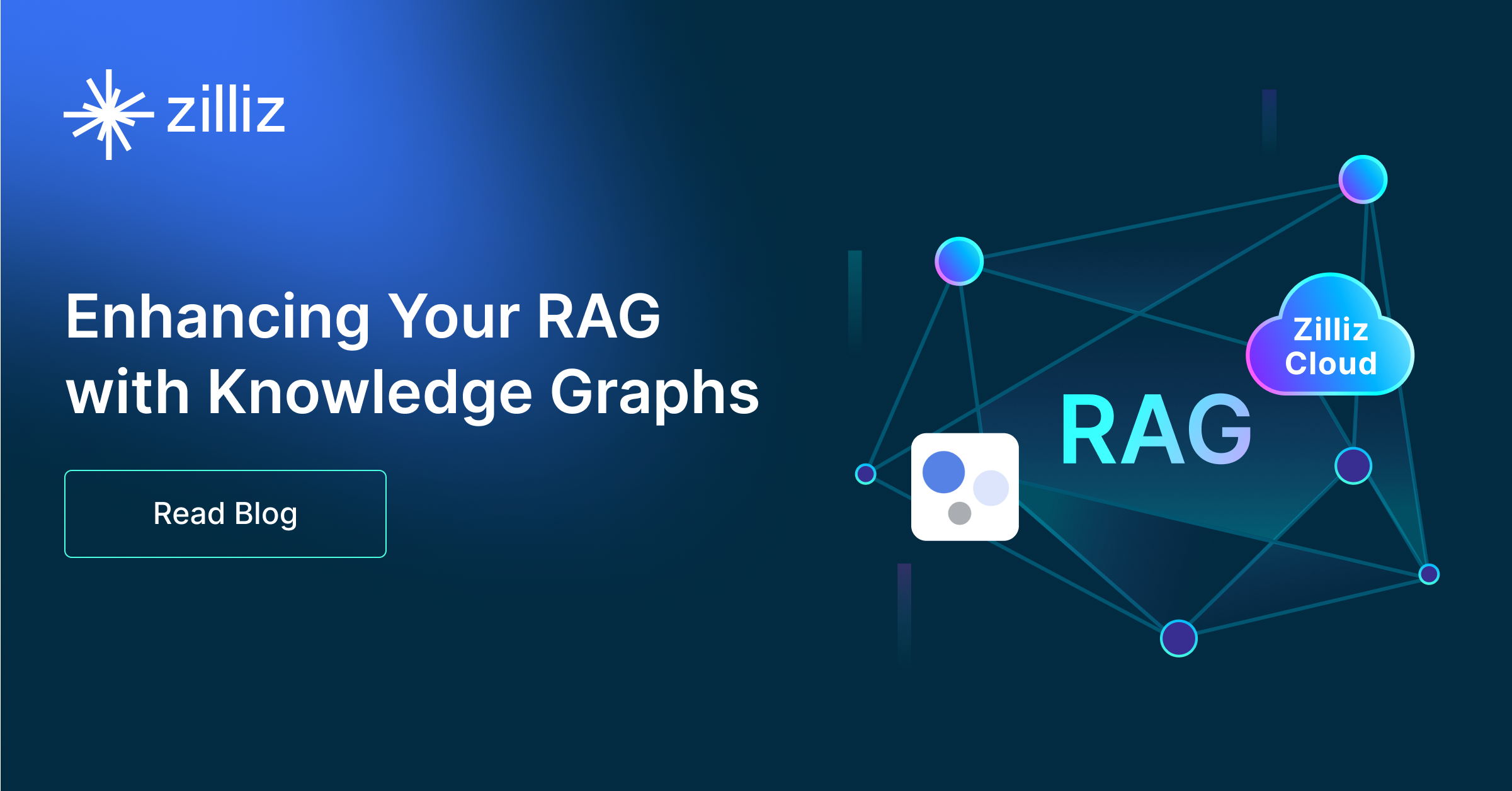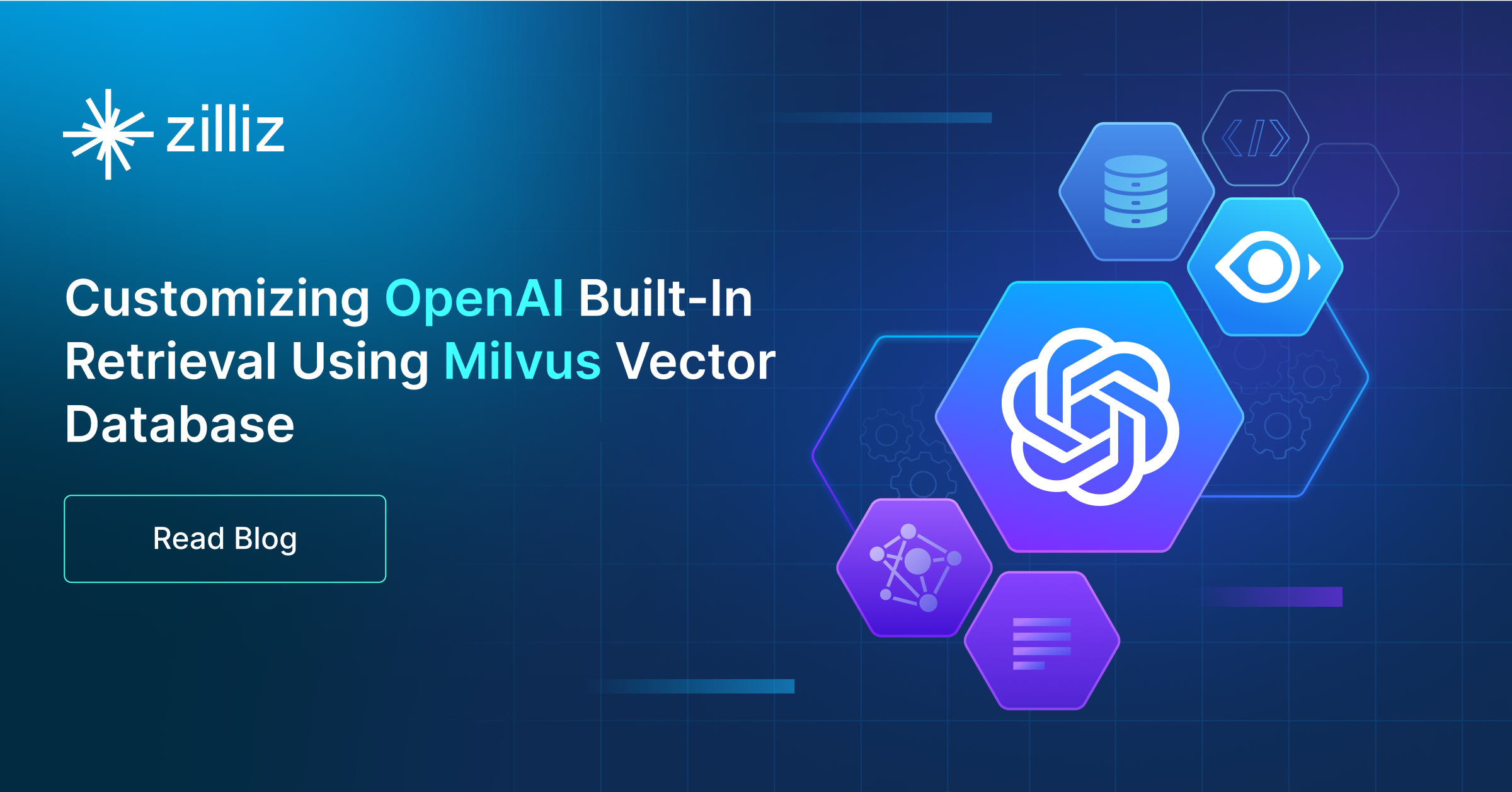Build RAG Chatbot with Llamaindex, Milvus, Mixtral 8x7B, and voyage-3-lite
Introduction to RAG
Retrieval-Augmented Generation (RAG) is a game-changer for GenAI applications, especially in conversational AI. It combines the power of pre-trained large language models (LLMs) like OpenAI’s GPT with external knowledge sources stored in vector databases such as Milvus and Zilliz Cloud, allowing for more accurate, contextually relevant, and up-to-date response generation. A RAG pipeline usually consists of four basic components: a vector database, an embedding model, an LLM, and a framework.
Key Components We'll Use for This RAG Chatbot
This tutorial shows you how to build a simple RAG chatbot in Python using the following components:
- Llamaindex: a data framework that connects large language models (LLMs) with various data sources, enabling efficient retrieval-augmented generation (RAG). It helps structure, index, and query private or external data, optimizing LLM applications for search, chatbots, and analytics.
- Milvus: An open-source vector database optimized to store, index, and search large-scale vector embeddings efficiently, perfect for use cases like RAG, semantic search, and recommender systems. If you hate to manage your own infrastructure, we recommend using Zilliz Cloud, which is a fully managed vector database service built on Milvus and offers a free tier supporting up to 1 million vectors.
- Mixtral 8x7B: A sparse mixture-of-experts (MoE) model with eight 7B parameter networks, designed for efficient, high-performance NLP tasks. Excels in text generation, reasoning, and multilingual support while minimizing computational costs. Ideal for scalable enterprise applications, real-time chatbots, and multi-task environments requiring optimized resource utilization and versatile AI capabilities.
- Voyage-3-Lite: This model is designed for resource-constrained environments, offering a lightweight and efficient solution for various NLP tasks. It excels in applications such as chatbots, content generation, and real-time text analysis, providing quick responses while maintaining a balance between performance and computational efficiency. Ideal for developers needing high throughput with limited resources.
By the end of this tutorial, you’ll have a functional chatbot capable of answering questions based on a custom knowledge base.
Note: Since we may use proprietary models in our tutorials, make sure you have the required API key beforehand.
Step 1: Install and Set Up Llamaindex
pip install llama-index
Step 2: Install and Set Up Mixtral 8x7B
%pip install llama-index-llms-mistralai
from llama_index.llms.mistralai import MistralAI
llm = MistralAI(model="open-mixtral-8x7b")
Step 3: Install and Set Up voyage-3-lite
%pip install llama-index-embeddings-voyageai
from llama_index.embeddings.voyageai import VoyageEmbedding
embed_model = VoyageEmbedding(
voyage_api_key="",
model_name="voyage-3-lite",
)
Step 4: Install and Set Up Milvus
pip install llama-index-vector-stores-milvus
from llama_index.core import VectorStoreIndex, StorageContext
from llama_index.vector_stores.milvus import MilvusVectorStore
vector_store = MilvusVectorStore(
uri="./milvus_demo.db",
dim=1536, # You can replace it with your embedding model's dimension.
overwrite=True,
)
Step 5: Build a RAG Chatbot
Now that you’ve set up all components, let’s start to build a simple chatbot. We’ll use the Milvus introduction doc as a private knowledge base. You can replace it with your own dataset to customize your RAG chatbot.
import requests
from llama_index.core import SimpleDirectoryReader
# load documents
url = 'https://raw.githubusercontent.com/milvus-io/milvus-docs/refs/heads/v2.5.x/site/en/about/overview.md'
example_file = 'example_file.md' # You can replace it with your own file paths.
response = requests.get(url)
with open(example_file, 'wb') as f:
f.write(response.content)
documents = SimpleDirectoryReader(
input_files=[example_file]
).load_data()
print("Document ID:", documents[0].doc_id)
storage_context = StorageContext.from_defaults(vector_store=vector_store)
index = VectorStoreIndex.from_documents(
documents, storage_context=storage_context, embed_model=embed_model
)
query_engine = index.as_query_engine(llm=llm)
res = query_engine.query("What is Milvus?") # You can replace it with your own question.
print(res)
Example output
Milvus is a high-performance, highly scalable vector database designed to operate efficiently across various environments, from personal laptops to large-scale distributed systems. It is available as both open-source software and a cloud service. Milvus excels in managing unstructured data by converting it into numerical vectors through embeddings, which facilitates fast and scalable searches and analytics. The database supports a wide range of data types and offers robust data modeling capabilities, allowing users to organize their data effectively. Additionally, Milvus provides multiple deployment options, including a lightweight version for quick prototyping and a distributed version for handling massive data scales.
Optimization Tips
As you build your RAG system, optimization is key to ensuring peak performance and efficiency. While setting up the components is an essential first step, fine-tuning each one will help you create a solution that works even better and scales seamlessly. In this section, we’ll share some practical tips for optimizing all these components, giving you the edge to build smarter, faster, and more responsive RAG applications.
LlamaIndex optimization tips
To optimize LlamaIndex for a Retrieval-Augmented Generation (RAG) setup, structure your data efficiently using hierarchical indices like tree-based or keyword-table indices for faster retrieval. Use embeddings that align with your use case to improve search relevance. Fine-tune chunk sizes to balance context length and retrieval precision. Enable caching for frequently accessed queries to enhance performance. Optimize metadata filtering to reduce unnecessary search space and improve speed. If using vector databases, ensure indexing strategies align with your query patterns. Implement async processing to handle large-scale document ingestion efficiently. Regularly monitor query performance and adjust indexing parameters as needed for optimal results.
Milvus optimization tips
Milvus serves as a highly efficient vector database, critical for retrieval tasks in a RAG system. To optimize its performance, ensure that indexes are properly built to balance speed and accuracy; consider utilizing HNSW (Hierarchical Navigable Small World) for efficient nearest neighbor search where response time is crucial. Partitioning data based on usage patterns can enhance query performance and reduce load times, enabling better scalability. Regularly monitor and adjust cache settings based on query frequency to avoid latency during data retrieval. Employ batch processing for vector insertions, which can minimize database lock contention and enhance overall throughput. Additionally, fine-tune the model parameters by experimenting with the dimensionality of the vectors; higher dimensions can improve retrieval accuracy but may increase search time, necessitating a balance tailored to your specific use case and hardware infrastructure.
Mixtral 8x7B optimization tips
To optimize Mixtral 8x7B in RAG, prioritize efficient context retrieval by fine-tuning chunk size and overlap for balanced relevance and latency. Use sparse attention configurations to reduce computational overhead, and enable tensor parallelism to leverage its mixture-of-experts architecture. Quantize the model to 4-bit precision (e.g., via GPTQ) for faster inference with minimal accuracy loss. Pre-filter retrieved documents to remove noise, and cache frequent query embeddings. Adjust temperature (0.2-0.5) and max tokens to balance creativity and focus. Profile expert routing to ensure balanced workload distribution across GPU resources.
voyage-3-lite optimization tips
voyage-3-lite is optimized for speed and efficiency, making it a strong choice for low-latency RAG applications. Improve retrieval by minimizing the number of retrieved documents while maintaining relevance using adaptive filtering techniques. Keep prompts concise and to the point, avoiding redundant context to reduce processing overhead. Set temperature between 0.1 and 0.2 to prioritize factual accuracy and prevent unnecessary response variation. Use caching to reduce repeated API calls for common queries. Implement response streaming to improve user experience in real-time applications. Optimize resource usage by running voyage-3-lite in high-throughput scenarios where speed is prioritized over deep reasoning, reserving larger models for more complex analysis.
By implementing these tips across your components, you'll be able to enhance the performance and functionality of your RAG system, ensuring it’s optimized for both speed and accuracy. Keep testing, iterating, and refining your setup to stay ahead in the ever-evolving world of AI development.
RAG Cost Calculator: A Free Tool to Calculate Your Cost in Seconds
Estimating the cost of a Retrieval-Augmented Generation (RAG) pipeline involves analyzing expenses across vector storage, compute resources, and API usage. Key cost drivers include vector database queries, embedding generation, and LLM inference.
RAG Cost Calculator is a free tool that quickly estimates the cost of building a RAG pipeline, including chunking, embedding, vector storage/search, and LLM generation. It also helps you identify cost-saving opportunities and achieve up to 10x cost reduction on vector databases with the serverless option.
 Calculate your RAG cost
Calculate your RAG cost
What Have You Learned?
Congratulations on making it through this enlightening tutorial! You’ve unlocked the potential of integrating LlamaIndex, Milvus, Mixtral 8x7B, and a versatile embedding model to craft a powerful Retrieval-Augmented Generation (RAG) system. By exploring how these components synergize, you’ve learned how to enhance information retrieval, allowing for precise context-driven responses that feel both intelligent and seamless. Each piece has a vital role: LlamaIndex structures your data, Milvus provides a lightning-fast vector database for efficient storage and retrieval, Mixtral 8x7B serves as the sophisticated powerhouse for generating responses, and the embedding model enriches your content by creating a deep semantic understanding. This synergy equips you with a framework to elevate whatever application you're aiming to develop, opening doors to innovative solutions.
Alongside these core integrations, this tutorial has equipped you with optimization tips to ensure your RAG system runs smoothly and efficiently. You even had access to a handy RAG cost calculator to keep track of your resource usage and find cost-effective solutions. With this knowledge under your belt, you're well-prepared to start experimenting and innovating your own RAG applications. So, roll up your sleeves and dive into building, optimizing, and refining your projects! The possibilities are endless, and the journey is just beginning. We can’t wait to see what you’ll create!
Further Resources
🌟 In addition to this RAG tutorial, unleash your full potential with these incredible resources to level up your RAG skills.
- How to Build a Multimodal RAG | Documentation
- How to Enhance the Performance of Your RAG Pipeline
- Graph RAG with Milvus | Documentation
- How to Evaluate RAG Applications - Zilliz Learn
- Generative AI Resource Hub | Zilliz
We'd Love to Hear What You Think!
We’d love to hear your thoughts! 🌟 Leave your questions or comments below or join our vibrant Milvus Discord community to share your experiences, ask questions, or connect with thousands of AI enthusiasts. Your journey matters to us!
If you like this tutorial, show your support by giving our Milvus GitHub repo a star ⭐—it means the world to us and inspires us to keep creating! 💖
- Introduction to RAG
- Key Components We'll Use for This RAG Chatbot
- Step 1: Install and Set Up Llamaindex
- Step 2: Install and Set Up Mixtral 8x7B
- Step 3: Install and Set Up voyage-3-lite
- Step 4: Install and Set Up Milvus
- Step 5: Build a RAG Chatbot
- Optimization Tips
- RAG Cost Calculator: A Free Tool to Calculate Your Cost in Seconds
- What Have You Learned?
- Further Resources
- We'd Love to Hear What You Think!
Content
Vector Database at Scale
Zilliz Cloud is a fully-managed vector database built for scale, perfect for your RAG apps.
Try Zilliz Cloud for Free


